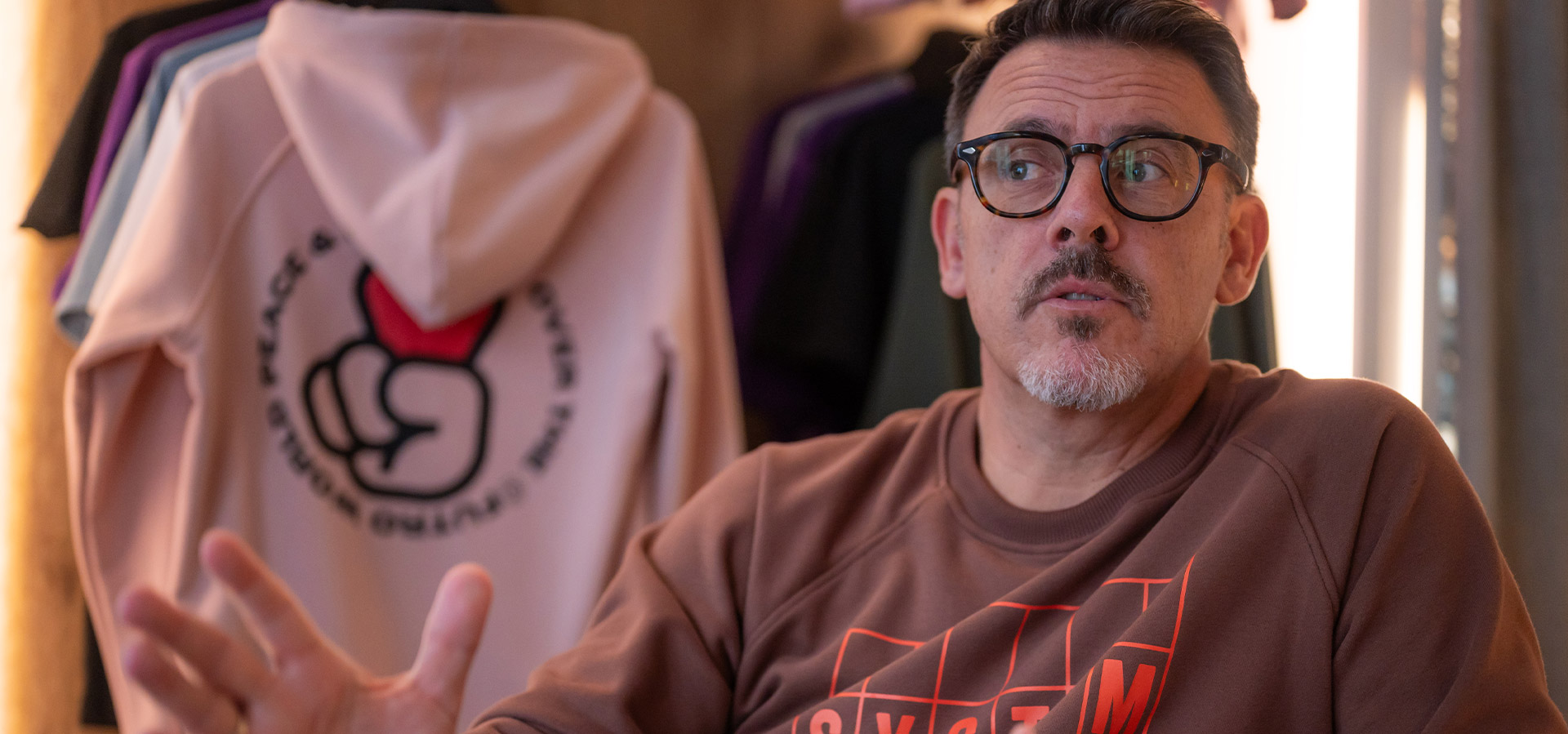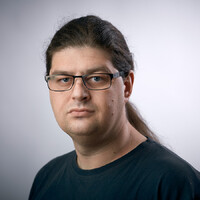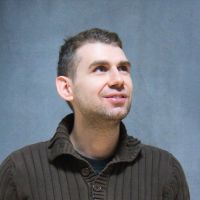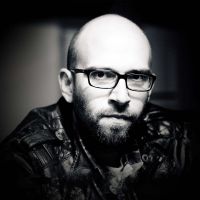Slavimir Stojanovic Futro: Creative genius from the Professors' colony
He is considered one of the most prolific Serbian graphic designers, with his studio ranking among the top 100 in the world. In addition to graphic design, he is involved in writing, illustration, and teaching, and it seems that his creativity knows no bounds. Slavimir Stojanović Futro, in an interview for 011info, reminisces about his childhood memories from Professors' Colony, talks about his drive to prove himself from an early age, and reveals how he went from being a school bench caricaturist to a globally renowned designer and the author of the children's picture book "Singi Lumba."
How do you remember your childhood?
The first and most important memory is of Professors' Colony, a part behind Cvijićeva Street, towards the Pionir Hall. That was my neighborhood from which everything in life started, and everything important seemed to happen there. As a kid, I gravitated in two directions. One was towards Tašmajdan and the city center, and then further towards Novi Beograd, where I often visited my grandparents in Šest kaplara. I also cherished the nearby parks around Ušće. The other direction was entirely opposite, towards Karaburma, where I made new friends while attending elementary and high school.
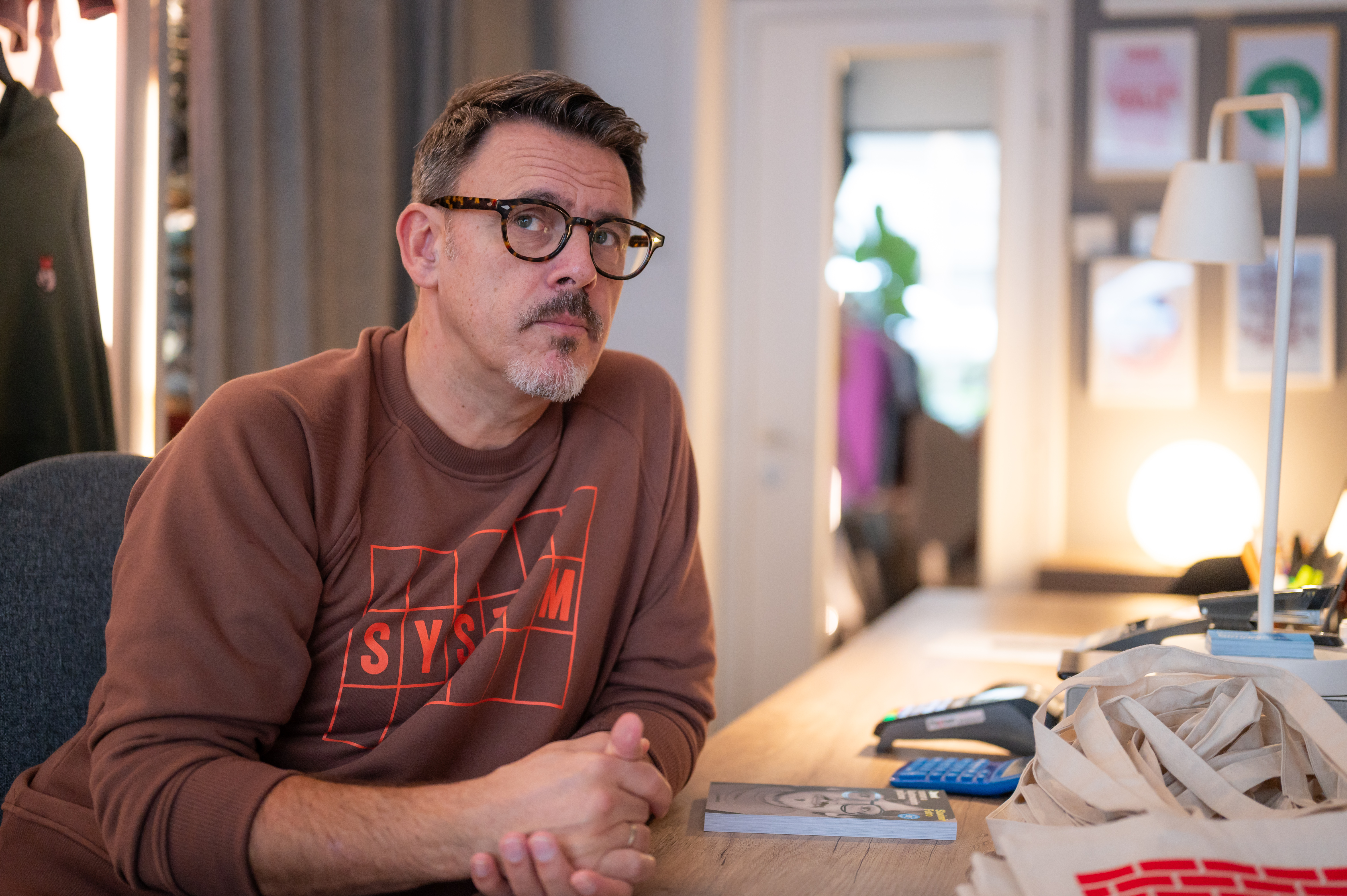
Was there a specific reason why a kid from the city center attended school in Karaburma?
The reason was quite absurd. My mom worked at the Youth Conference of Palilula, which had its branch in Karaburma. She thought it convenient to take me to school every morning when she went to work. However, she quickly got transferred to 27. marta, which was close to our apartment. Still, I remained in that school in Karaburma. Why? Because I had straight A's, and because the teacher, Rosa, was excellent. In fact, she was such a good teacher that my brother Neša followed in my footsteps, and our parents also enrolled him in the school in Karaburma. So, I commuted daily by bus from the center to the school on the outskirts. It might sound strange to someone, but objectively, that's how it was. Karaburma was a working-class settlement. Meanwhile, it has expanded, and now it's ten times larger than when I attended elementary school in 1975.
Was it important back then which part of Belgrade you were from?
Very much so. In my time, it was clearly defined who was from the city center. All the "white" or privileged people lived around Tašmajdan, while everyone else existed in the so-called ghetto, to which I belonged, even though Cvijićeva was only five minutes away from Taš. For example, boys and girls from the VIII Belgrade Gymnasium, today's III Gymnasium, seemed like beings from another, more quality planet. They looked different, carried a different energy. I always had that aesthetic seismograph turned on, and it was crucial for me to see what people wore, how they looked, what they conveyed with it... I think the designer in me yearned for that. Interestingly, the first time I felt that I truly lived in Belgrade and belonged to it was during the transfer from the VII Belgrade Gymnasium in Karaburma to the V Belgrade Gymnasium below Tašmajdan Park.
When did you start drawing?
I've always been drawing. Initially, I thought I would become a writer or a sports commentator since I was actively involved in sports, training in athletics. In fact, as a sprinter, I won competitions in the 100m and 200m. When it was time to switch to the decathlon, I got scared, even though I had the predisposition for it, so I turned to football. At that time, sports were more important to me than so-called cultural elevation.
However, over time, I realized that, in addition to being able to write, I could also illustrate. I started with drawing caricatures. Initially, I drew caricatures of myself. I was snotty and lop-eared, so it wasn't hard to create a snotty lop. On the other hand, it gave me the right to seriously point out to my schoolmates through caricatures what their physical shortcomings were.
At the same time, I became aware of my surroundings and myself. It was clear to me that I wouldn't get anything in return just because, for example, I was cute. Since my brother was sick, my parents dedicated a lot of time to him. Drawing was my way of drawing attention to myself. So, that creativity soon became the light that would illuminate my life, even in the darkest moments. Without that light, I really have no idea what I would have become in life.
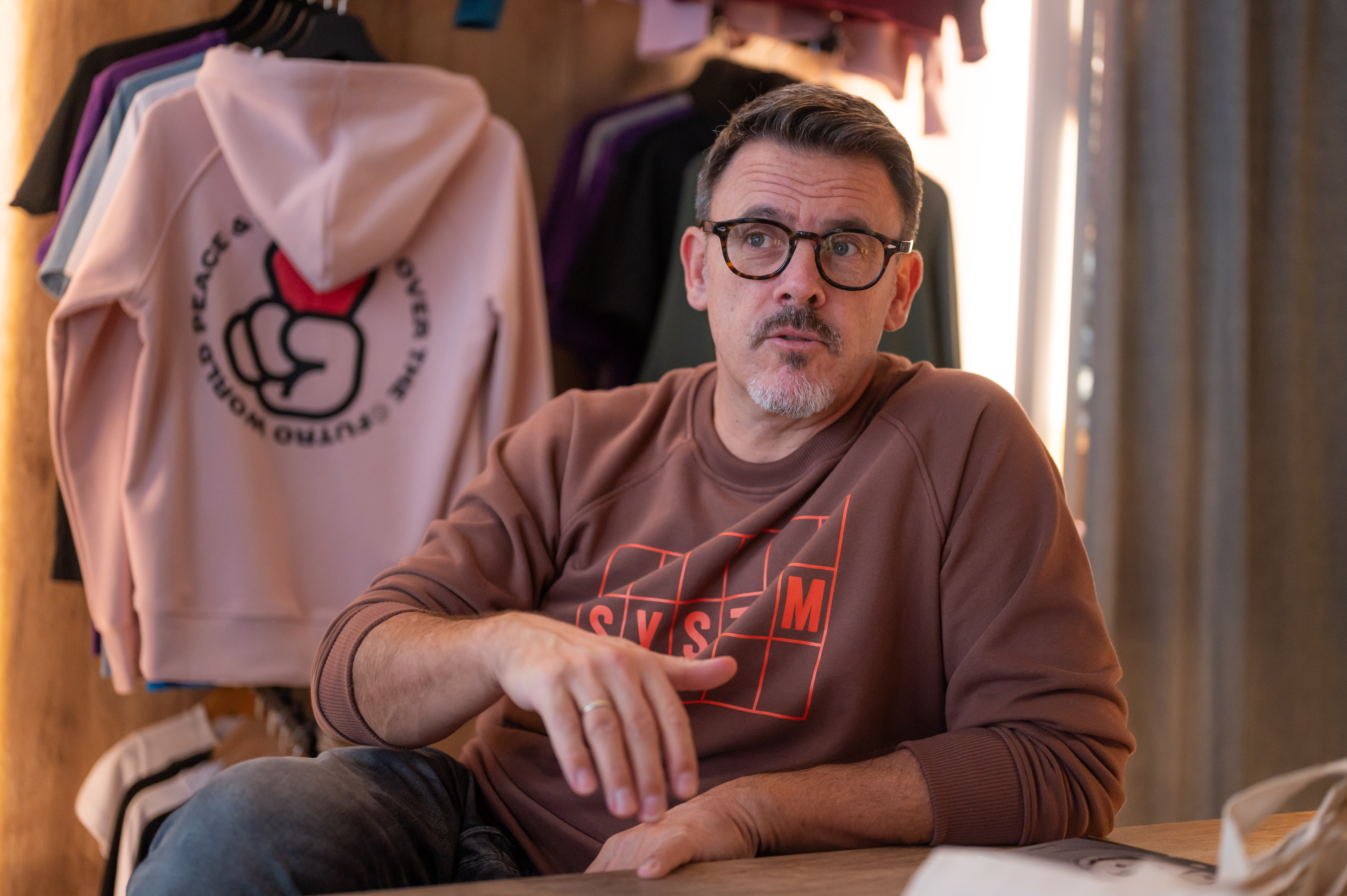
When did signs appear that design would become your profession?
That happened when I met Jovanket, a friend from the bench in V Belgrade Gymnasium. While I was getting better and better at caricatures, he drew realistic characters from his head. It turned out that he was preparing for a design school. By the way, we were "victims" of directed education, so we could only go to a technical school in the third and fourth year.
Anyway, it fascinated me, and on Jovanket's recommendation, I started preparing, where I realized how little I actually knew. Everyone around me could faithfully reproduce a photograph, and I could only distort everything to make it look like a caricature.
To enroll, I had a week to acquire the necessary knowledge. My life literally changed from the ground up. I didn't sleep a wink for seven days; I just absorbed diligently. The additional motivation was the situation at home, where my brother was getting worse, my father was going crazy at work, my mother was dramatizing around all of it, and I was looking to escape from everything.
I managed to master everything and enroll in high school, which paved the way for my future. The need to always be at the top, whatever I did, then led me, so my existence wouldn't be questioned.
Why did you think that way?
That's a life question I asked myself quite early in childhood. It all dates back to going to America to visit my grandparents, who worked at the embassy. I was only three years old, and my parents sent me there alone by plane.
I spent a year and a half in the USA and almost forgot about my parents. When I returned, again by plane, I was almost five years old and an entirely different child. I spoke English better than Serbian and attended an international kindergarten. During that time, my brother took my place, and I felt that by being sent to America, I had become insignificant.
That's how my need arose for everything I did to be above average so that I could give myself a sense of importance and then to others.
Is that still the case today?
Not at all, it doesn't let up. So, when my daughter Nađa was born, I made sure she never experienced that feeling, dealing with her own existentialism. That's the main reason why I made and gave her the picture book "Singi Lumba" for her birthday.
When we received the award for the best children's book of the year and signed copies, I knew she wouldn't suffer the torment I had in life. At the same time, she was aware that, even though so small, she had become someone's inspiration. Also, it was a practical exercise that I had corrected some things that were crooked in me.
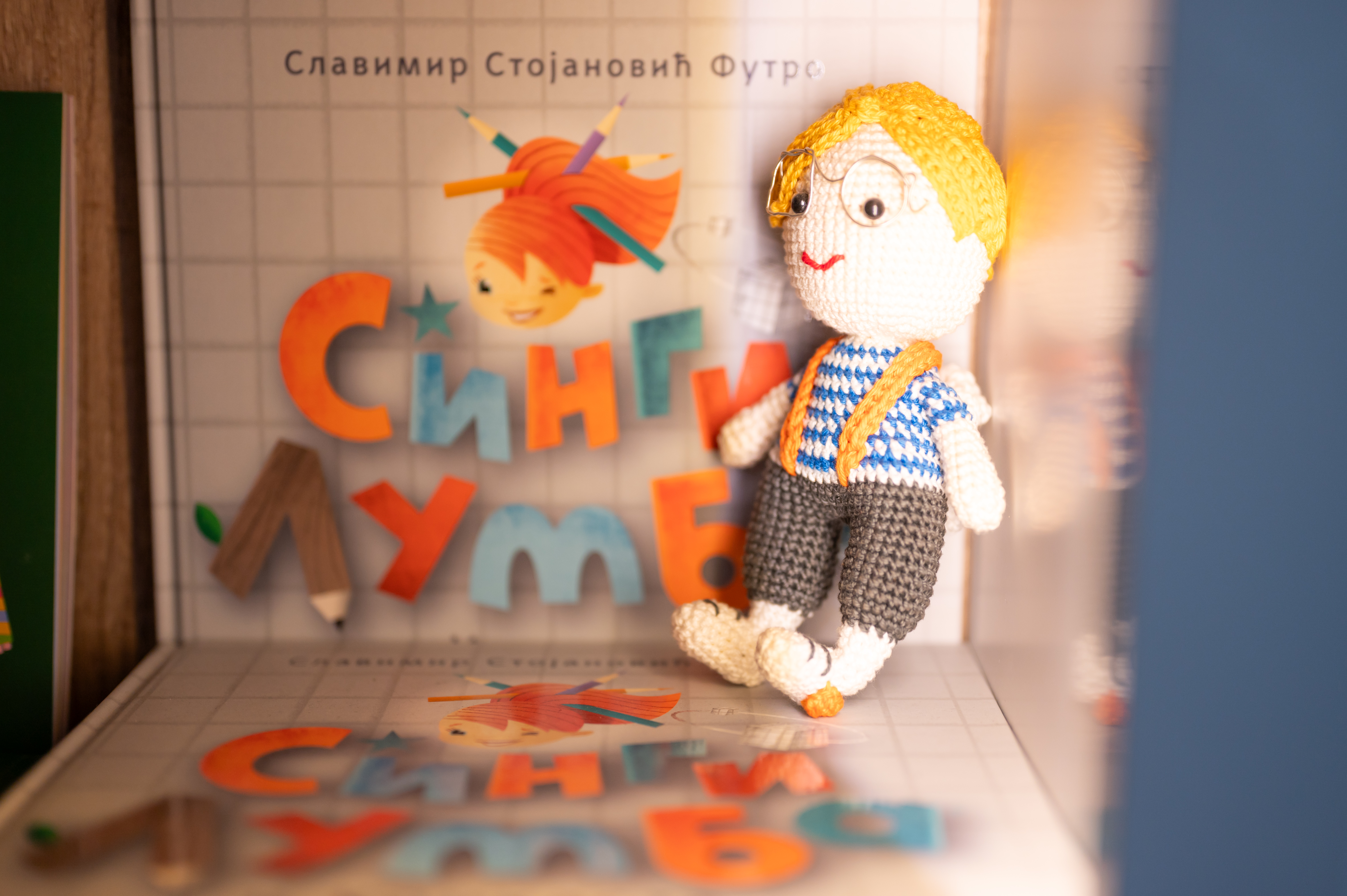
So, you found inspiration to be a better father.
That's right – a father, but also a human being. I developed empathy, which I perhaps didn't have to that extent before. My wife Olja, who earned her doctorate in empathy, also helped me with that, so it rubbed off on me a bit.
Before that, I was in the so-called success mode. Until the age of 40, everything revolved around proving to others that I was competent in my job. Then, the help light turned on, and everything opened up for me in life. Simply put, I finally started living.
Do you remember your first engagement?
Oh, yes. I was in the second year of high school and worked for my mom, more precisely, for the Youth Conference, which needed a poster. By the way, that was a real epicenter of the creative world on Palilula. Among others, Neša Leptir never left that Conference.
I got the opportunity to create a poster for the Palilula Cultural Olympics, or POK 85. The entire municipality was covered with my posters, which, incidentally, were completely pointless when I look back now.
However, that didn't stop me from feeling like a demigod. It went so far that I thought people recognized me on the street. I would often sit on a bench and wait for passersby to comment on something. Those were childish antics. Still, I got hooked, seeing that mass communication was possible. I also realized that I had a platform where I could prove myself again.
Confirmation came when the Youth Political School "Ivo Lola Ribar" announced a general competition. I won it, despite the fact that professionals could also apply. Unlike the previous one, that work was not at all dull; you could even say it was witty.
I spent the prize money of, let's say, 700 German marks by sitting on the first train to Trieste and buying two pairs of "Converse": ochre and burgundy. The next day, to solidify the "loot," I wore one ochre and one burgundy "Converse" to school. It was all about showing off aesthetics in the era of socialism, i.e., everything that adorned the West.
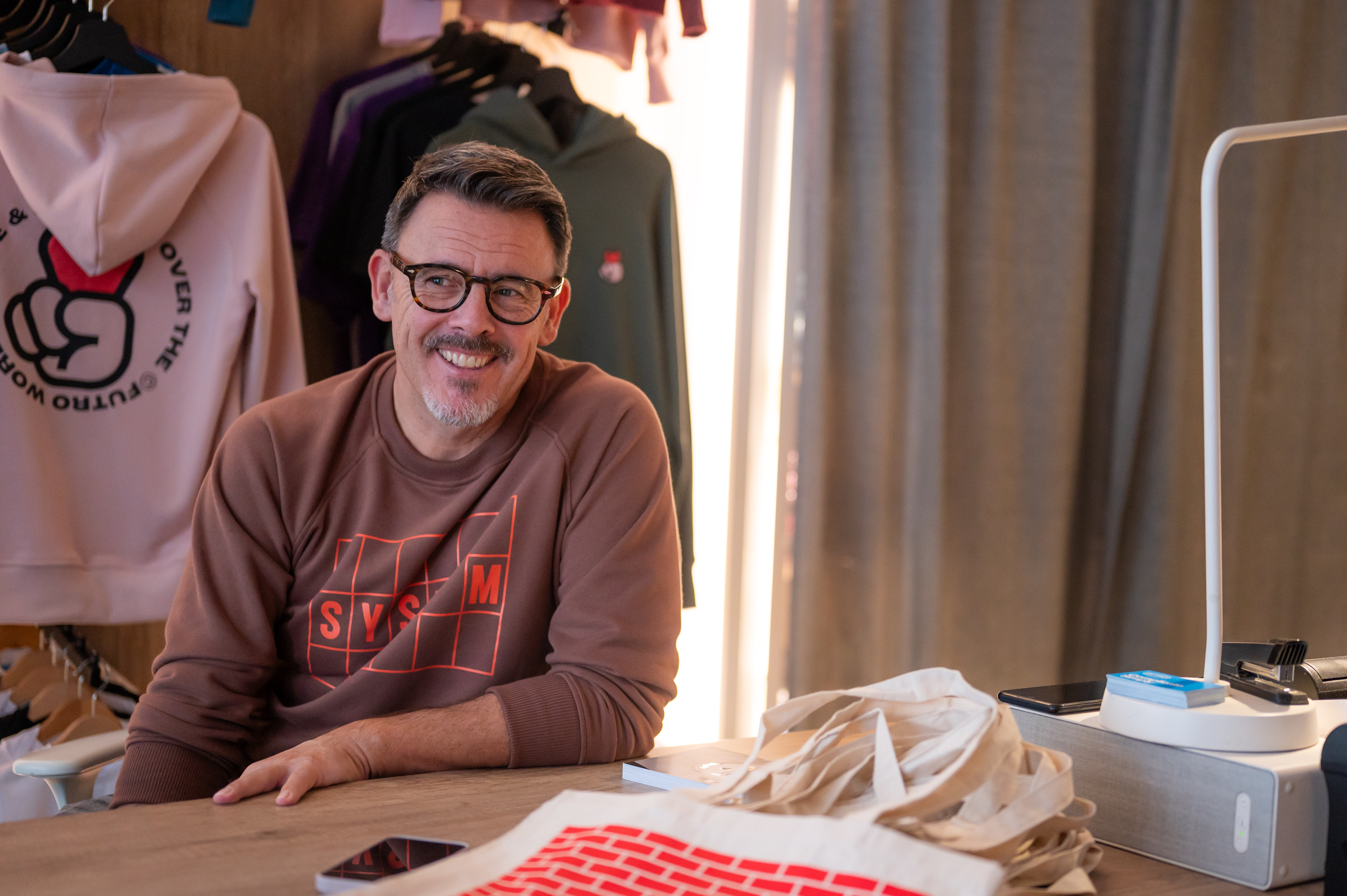
Soon, the awards started piling up. One of them is the lifetime achievement award you received before completing your studies, which is quite unusual.
You're right. The reason I didn't finish college on time is that Yugoslavia began to fall apart at that time, which hit me hard. I was strongly attached to that country. First, I was raised that way. Second, during elementary school, I was, for example, a representative of the Belgrade Red Cross, so I hung out with peers from other republics and formed my first sympathies.
Those were wonderful memories, and I had no intention of spoiling them by participating in the destruction of the former country. So I headed to Sweden, where I enrolled in the High Academy of Design without an entrance exam. Namely, Professor Hans Krister Erikson, who was bald and ruddy, resembling Santa Claus's son, was impressed by my portfolio and admitted me to the Academy. Although I didn't have documents, I stayed there to study.
Upon returning to Belgrade, I got a job at Saatchi & Saatchi agency, where, at the age of 23, I was the design director for the entire Balkans, which was still a hotspot at the time. However, it didn't reflect on my daily life. On the contrary, when I entered the agency, I forgot about all the nonsense that didn't give us peace. So I could live in a parallel world even without completing my studies because I had practical knowledge.
When the NATO aggression began, I moved to Slovenia and stayed there for ten years. Twice I enrolled in college, but I didn't feel like finishing. Simply put, I would need a diploma only if I wanted to pursue a teaching career.
Was there a desire to still finish your studies?
Absolutely, mainly because my parents failed to graduate because they had me when they were very young, and it was an unrealized wish in our family. And then, when my daughter Nađa started elementary school and began to receive grades, I realized that I had to send her an appropriate message – that everything a person dreams of is worth dreaming.
So, I hit the books in 2017 and finished college, fulfilling the biggest dream of my youth. On that occasion, I wrote a post on Facebook, which I concluded with the sentence: "Dad, we finished college!" Shedding tears, I blurted out some truth, which earned 60,000 likes, 3-4,000 comments, and the same number of shares.
It was a heart-wrenching moment for me, which simultaneously gave me the strength to start believing in my authorship – that I didn't always have to get commissioned projects but could create and give something I believed our society needed. And that authorship direction has been going on for six or seven years now.
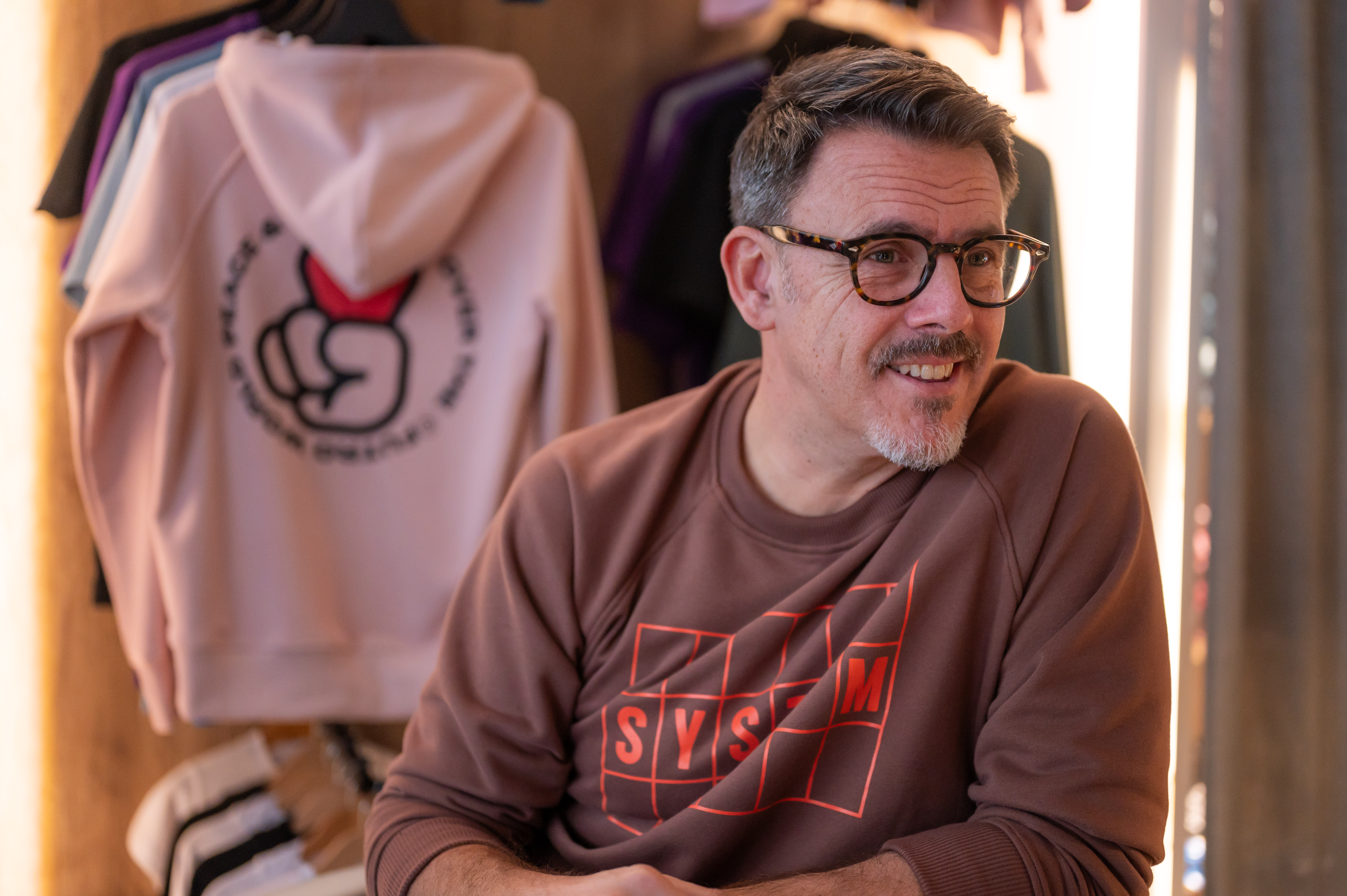
Which of your works is your favorite?
Certainly, the children's book "Singi Lumba," which recently reached its climax. I received a call from the Duško Radović Children's Theater, where I used to go regularly as a child, for a logo redesign needed for social media. Actually, they needed a touch-up, not a design masterpiece. And bit by bit, I found myself watching their shows and realized that I was actually working for my children's theater. An incredible feeling of happiness overwhelmed me.
When we completed everything as agreed, I thought that was the end of our story. But it turned out I was terribly mistaken. They asked me to create a poster for the play "The NeverEnding Story," as early as the next week. In the end, they invited me to lunch to celebrate our successful collaboration. On that occasion, they informed me that they had decided to make a puppet show about "Singi Lumba."
I froze on the spot. I simply didn't know what had happened to me. Somehow I gathered the strength to get up and make a few rounds around Tašmajdan to calm down. Perhaps it seems strange to some, but I'm not used to things happening on their own, i.e., without me provoking them.
So, that project is of priceless importance to me. The premiere of the play will be in the fall of 2024, coinciding with the release of the third book about the adventures of "Singi Lumba."
What do you enjoy doing the most in your job?
The most fun for me is when I have direct interaction – to the extent that I can speed up my consciousness and react quickly to the given topic. This is best reflected in the motivational lectures I give. They are at the level of stand-up motivation, where people laugh a little, cry a little. I really feel the best during them.
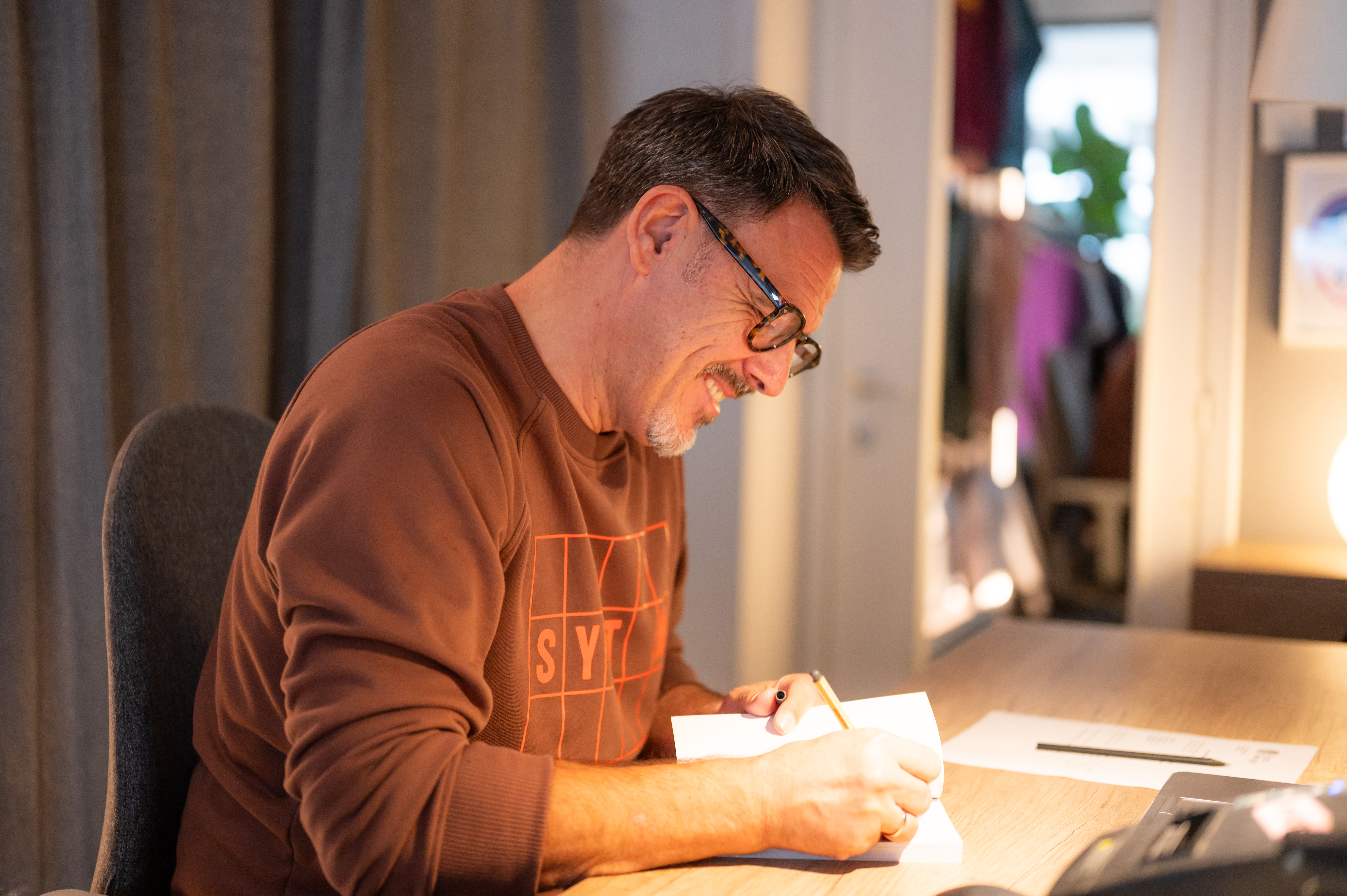
What does your work process look like otherwise?
I spend almost 90% of the time on research, i.e., discovering the essential truth of clients to help them with visual communication. I would say that this is the most complex part of the job.
On the other hand, it often happens that I write slogans and campaign titles or even come up with entire campaigns. It can be freely said that, from a creative aspect, I can offer everything to clients.
Of course, there are times when I am powerless because the client doesn't know what they want. Or they ask for it to be, I quote, "nicer," whatever that means. It's literally at the level of aesthetic surgery, without any reason or need, chasing something that is currently in fashion.
That's why I like it when the ultimate goal is clear, as was the case with the National Museum in Belgrade. We knew what we wanted: to clean, adapt, introduce traces of Roman and Celtic culture into the visual identity of this institution. And that was a textbook example of planning and execution, where each creative decision had its foundation.
You are known in the design world for not accepting established forms.
I try to apply so-called lateral thinking. If you directly face creative challenges, you will mostly resort to expected solutions stored in your creative files. This especially applies to us visual types, who have photographic memory, because then something already seen in your works unintentionally slips out.
To prevent that, there must be a foundation in the essential truth, which needs to be approached in an unexpected way. The best example of this is Optika Rugel in Slovenia, which hired me for a sophisticated look. I didn't put on glasses and quote a price; instead, I immortalized the entire campaign with real-life situations of people with poor vision. For example, we had an athlete who jumped 10 meters just before the hurdle. And that truly changes the perception from an optical ad perspective.
All in all, I try to play with the unexpected. In fact, the job of us visual communicators is tough. It's a sprint discipline where you must constantly maintain the agility of the mind.
Many designer colleagues worldwide usually rush for the latest font, which irresistibly beckons, seeking confirmation for their place in the global design establishment. Along the way, they forget what our task is. The point is not to put glaze over a hole that will crack like a skramica and be blown away by the wind but to fill it and then smooth it.
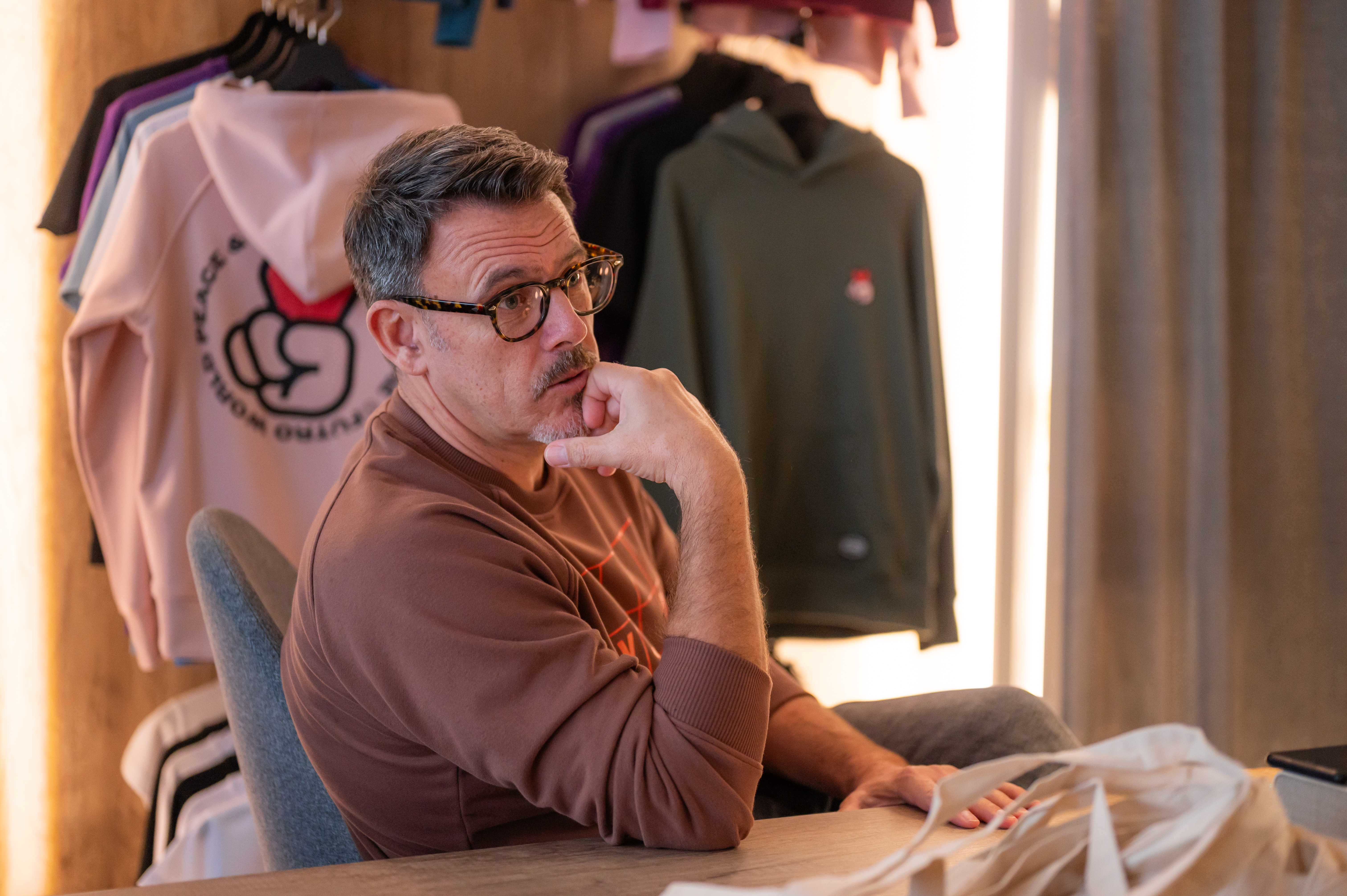
In recent times, some creatives fear that artificial intelligence will replace them. What is your opinion on this matter?
I believe that artificial intelligence-based tools will continue to advance, offering even higher-quality final products, which will definitely threaten people who are not hyper-masters. Ultimately, this will lead to a "funnel purification," which I find somewhat pleasing because there are many who have gained fame and wealth with a few tricks they instruct the computer to do.
On the other hand, clients do not perceive the difference. Moreover, they send me examples of works created by artificial intelligence and ask me to do something in that manner. My trained eye immediately recognizes such things. I always clearly see that there is no chance that a human hand did that.
Clients are now in a phase where they would gladly skip the investment in us creatives to reduce costs, which is somewhat understandable. I just think that the question of authenticity will be recognized over time. Currently, fascination is at work – overshadowed by simplicity, which horrifies the profession.
Do you think there is a future for budding designers?
Absolutely. Humans are creative beings, which sets them apart from all others in the world. However, if we don't exercise our nature, artificial intelligence will prevail, and the entire civilization will go down in history. Simply put, it is in our nature to move, not to sit and flip through TV channels. All in all, a very unpleasant moment for humanity.

You recently launched your masterclass.
That's right. The masterclass is designed to convey broad knowledge to my participants, who come in various ages and profiles. Managers, creatives, students seeking improvement, and many others attend the courses.
The program and assignments do not require masterpieces from participants but only that they engage their brains. I achieved this by separating the tool from its essence, and I apply the same principle to them.
And interestingly, every six weeks, the duration of the courses, I always notice the same pattern with new participants. Specifically, most of them start with an idea of aesthetics, and after a month and a half, they transform into authors who understand what it means to devise a broad concept. Of course, a certain level of life maturity is needed to see the bigger picture.
What are your plans for the future?
I am currently writing my second novel, which, I hope, will be published in 2024. Meanwhile, with over 10,000 copies sold, the autobiography "Nine" has become a bestseller, and my storytelling ambition from my youth has finally taken shape.
Another plan for the future is to engage in something that will motivate others. In terms of inspiration and improving the inner lives of others, prompting them to move forward because it has never been easier to become inert.




 1 ℃
1 ℃

